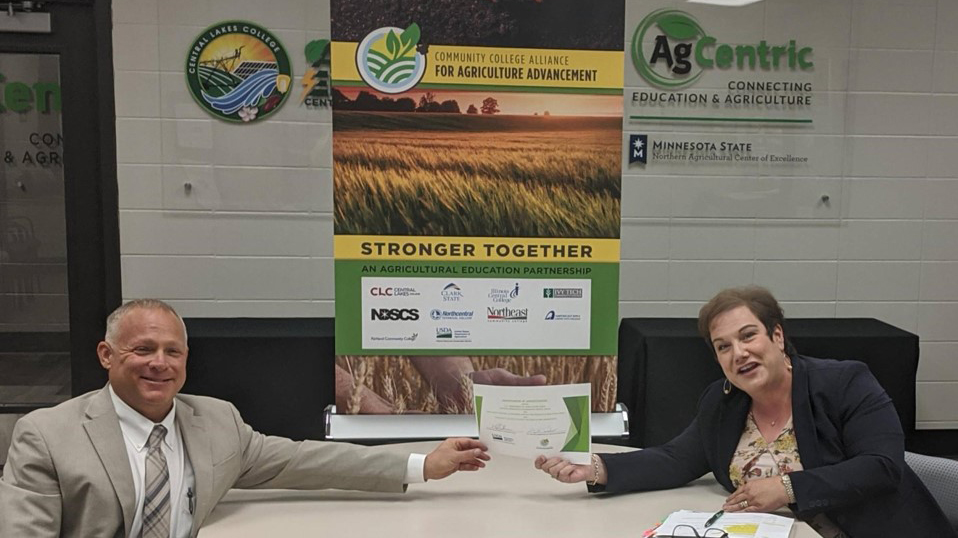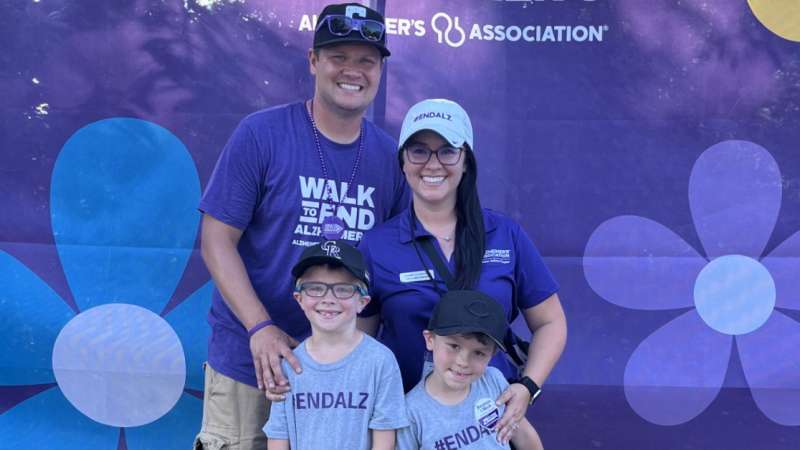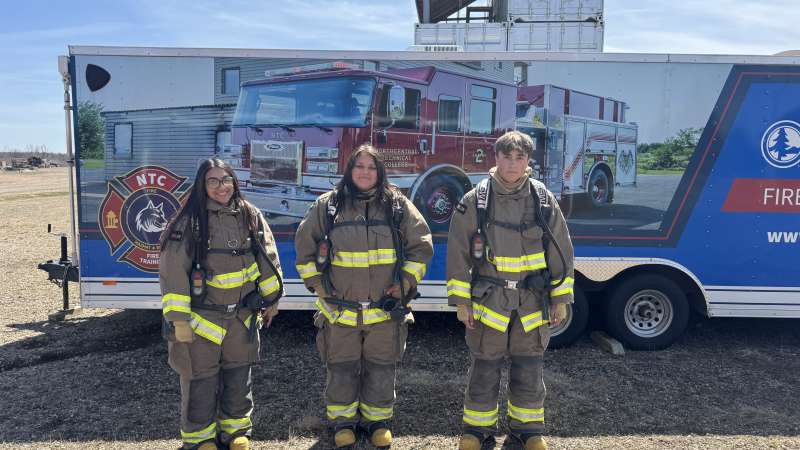(WASHINGTON D.C.) – The United States Department of Agriculture’s Natural Resource Conservation Service (USDA-NRCS) is partnering with Northcentral Technical College (NTC) and eight Midwest community colleges to support hands-on student learning in the field, to develop future conservation-minded farmers and ranchers, and to cultivate more graduates interested in pursuing careers with NRCS.
Representatives of the Community College Alliance for Agriculture Advancement (C2A3) and NRCS held a virtual ceremony to celebrate the formal signing of a national memorandum of understanding (MOU) to develop a cooperative framework to enhance and accelerate training and adoption of technologies and best practices for improved agricultural productivity and natural resources stewardship.
“NTC is excited to be a partner of C2A3 and the NRCS,” said Dr. Greg Cisewski, Dean of NTC’s School of Agricultural Sciences, Utilities and Transportation. “This collaborative agreement will allow NTC to educate our students and assist producers in growing more crops while improving the soil health.
‘The partnership will also bring pollinator plots to NTC this spring, which re-establishes native habitats for many pollinator species important to crop production.”
All C2A3 member institutions, including NTC, have college farms and are able to utilize their land resources for the implementation of conservation practices on the ground to help educate and inform students and producers. The goal of the cooperative agreement between the entities is to not only accelerate the adoption of conservation practices through the education of current, two-year agriculture students, but to also disseminate information to the broader community through field days and other college events and partnerships.
In addition, the colleges are utilizing the network to share resources, knowledge and expertise. Collectively, they are working on a grant through USDA’s North Central Sustainable Agriculture Research and Education (SARE) program, which seeks to increase awareness, knowledge and skills related to soil health, cover crops and no till agriculture. The development of content such as videos and case studies for the classroom is a critical component to help illustrate concepts of profitability, sustainability and productivity. These assets will be shared across the network for the benefit of all member institutions.
Minnesota Congressman Collin Peterson, who chairs the House Agriculture Committee, said during the signing event, ideas that come from partnerships like C2A3 and NRCS will assist he and his colleagues in Washington make decisions in a time of limited financial resources as they write the next Farm Bill.
“You’d be surprised how many members of the committee don’t have any real feedback from the rural world in terms of what we’re doing with these programs. And hopefully by doing things like this we can provide more of that to our committee members,” Peterson said. “I think we’re going to have to change things in agriculture going forward with concerns about climate change and water quality and all of these other issues are going to have to be addressed because our urban and suburban colleagues are demanding it. … I just want as much information as I can have as we’re making these decisions and what (C2A3 colleges) are doing is going to help us get them.”
“NTC’s Agriculture Center of Excellence serves as a great site to host these cover crop trials, manure application and pollinator plots,” Cisewski said. “The unique soils, climate, and abundance of producers in Northcentral Wisconsin provide a great location for hands-on participation in these field trials.
‘While the pandemic is limiting on-site participation NTC is working diligently to create online resources to be shared on the results of our field trials. When it is safe to do so, the College looks forward to hosting visitors and large groups for in-person field days.”
The C2A3 collaboration was born out of a mutual desire to provide more ongoing education, training and demonstration projects to future farm producers and agricultural service providers with the goal of improving the health, and therefore the long-term productivity, resilience and sustainability of the soil.
Kevin Norton, acting chief of NRCS, said the partnership demonstrates the power of public and private partnerships. He said it brings together the federal government with community colleges that represent the geography, the landscape and the agriculture where they’re located.
“NRCS recognizes the unique niche that these colleges play across rural landscapes all over the country, particularly those colleges that have actual working farms.”
Over the course of the next five-years, NRCS will develop a conservation plan for each member college that has land and address their resource concerns. After the plans are developed, the agency will assist the colleges in installing conservation practices, in addition to hosting field days, which Norton said demonstrates to all ag producers how conservation works and how it can make a difference on the land.
“Today’s memorandum of understanding establishes a collaborative framework for cooperative activities intended to enhance and accelerate training, the adoption of new technologies that would improve agriculture production and the natural resource stewardship in the geography around your campus and the agriculture producers tied to that,” he said.” “Over the next five-years, we’re going to focus this collaboration with joint pursuits – things that work for both of us around soil health.”
That includes looking into new opportunities related to water quality, such as keeping nutrients that are applied on the field, reducing sediment delivery, and other strategies.
“We’re (also) going to expand opportunities with the state conservationists and college presidents – we’re going to expand with what they are already doing and take a look at new curriculum opportunities where we can work to better build a career for your students if they look to pursue a career within federal service and conservation,” he said. … “We can do more together than we can do individually.”
In addition to NTC, C2A3 member institutions include Central Lakes College (Staples, Minn.), Clark State Community College (Springfield, Ohio), Illinois Central College (Peoria, Ill.), Ivy Tech Community College (Lafayette, Ind.), Northeast Community College (Norfolk, Neb.), Northeast Iowa Community College (Calmar, Iowa), North Dakota State College of Science (Wahpeton, N.D.), and Richland Community College (Decatur, Ill.).
For more information on C2A3, visit the organization’s website at agalliance.net.




